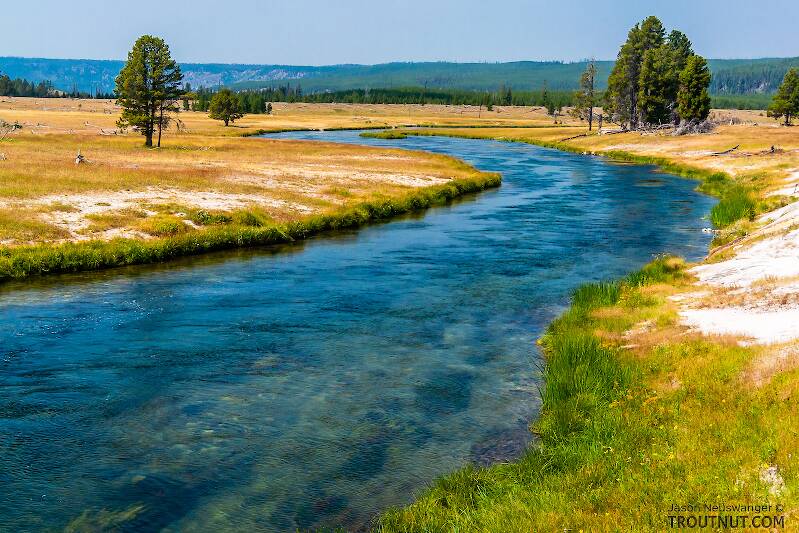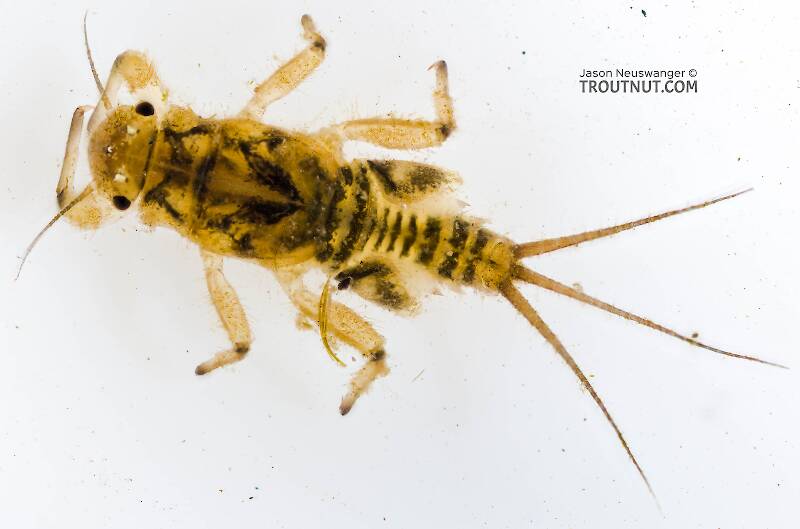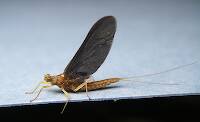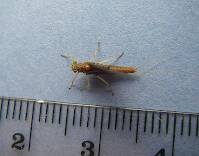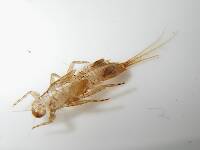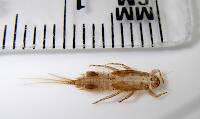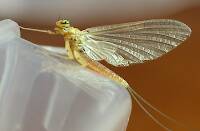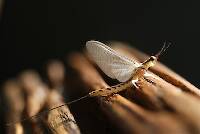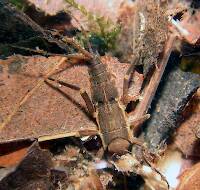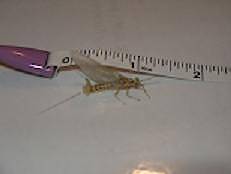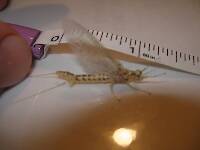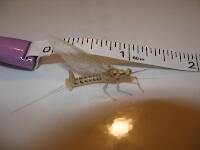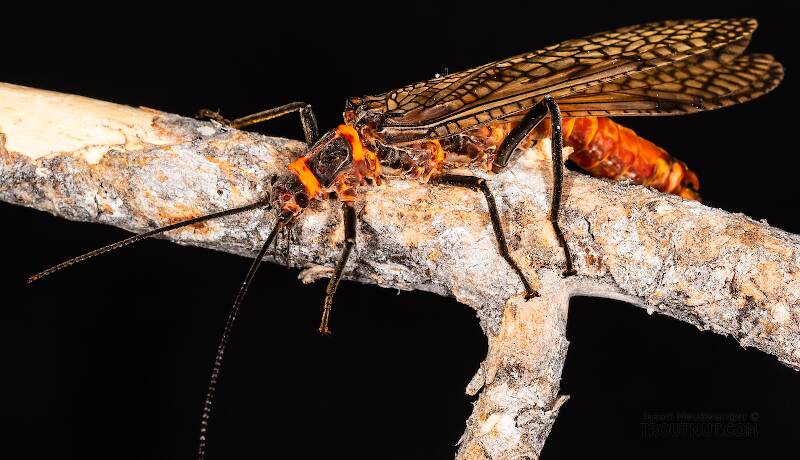
Salmonflies
Pteronarcys californica
The giant Salmonflies of the Western mountains are legendary for their proclivity to elicit consistent dry-fly action and ferocious strikes.
Featured on the forum

Troutnut is a project started in 2003 by salmonid ecologist Jason "Troutnut" Neuswanger to help anglers and
fly tyers unabashedly embrace the entomological side of the sport. Learn more about Troutnut or
support the project for an enhanced experience here.
CalebBoyle has attached these 2 pictures to aid in identification. The message is below.
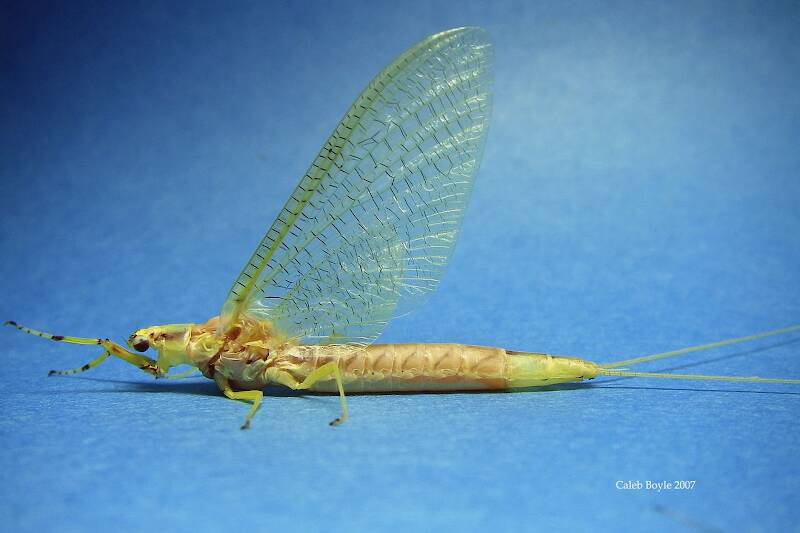
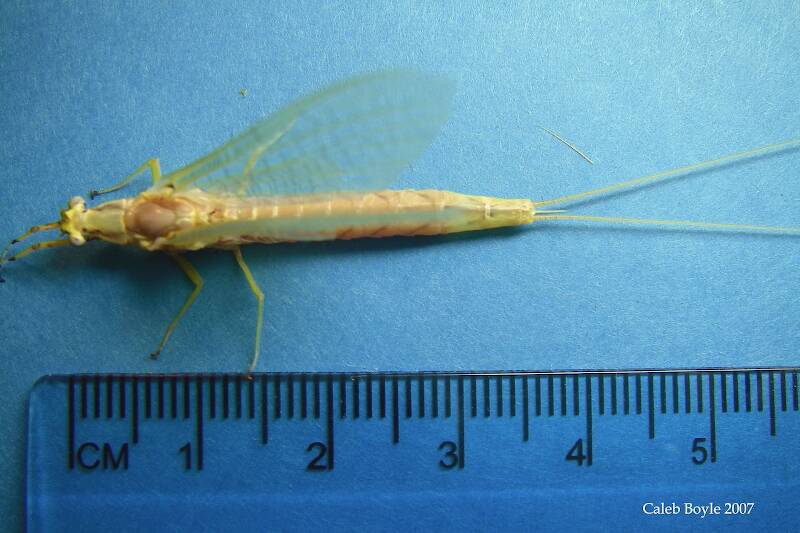
CalebBoyle on May 23, 2007May 23rd, 2007, 2:27 pm EDT
Hi guys,
I found this female mayfly near where I live and wanted to see what you all thought about it. It was found in gaston county (near Charlotte) in North Carolina. When I first glanced at it I thought it must be some kind of drake, but quickly realized it couldn't be. There are only 2 tails and this monster is 36-37mm long. I have never heard of Hexagenia in North Carolina, but isn't this a H. limbata? If so what records are there for NC hatches and how common are they? Most of the pictures that I have seen of limbata have darker markings on the abdomen, but then what other mayfly is this size other than a Litobrancha recurvata?
Caleb Boyle
I found this female mayfly near where I live and wanted to see what you all thought about it. It was found in gaston county (near Charlotte) in North Carolina. When I first glanced at it I thought it must be some kind of drake, but quickly realized it couldn't be. There are only 2 tails and this monster is 36-37mm long. I have never heard of Hexagenia in North Carolina, but isn't this a H. limbata? If so what records are there for NC hatches and how common are they? Most of the pictures that I have seen of limbata have darker markings on the abdomen, but then what other mayfly is this size other than a Litobrancha recurvata?
Caleb Boyle
Taxon on May 23, 2007May 23rd, 2007, 3:03 pm EDT
Nice photos, Caleb. You have (3) Hexagenia species in N. Carolina, H. atrocaudata, H. bilineata, and H. limbata. However, given its size and date of emergence, it is almost certainly H. limbata. Incidentally, notice the characteristic vestigal terminal filament! That is one I've been saving for you, Gonzo.
Troutnut on May 23, 2007May 23rd, 2007, 3:20 pm EDT
It's H. limbata. That's a widely variable species, and back in the 1940s it was actually broken into about 6 sub-species with different looks and geographic ranges. The sub-species aren't considered valid anymore (it's all just one undivided species now, I think) but the point is that H. limbata comes in many flavors.
Somebody recently emailed me asking me to identify one from Texas, too.
Somebody recently emailed me asking me to identify one from Texas, too.
Jason Neuswanger, Ph.D.
Troutnut and salmonid ecologist
Troutnut and salmonid ecologist
GONZO on May 23, 2007May 23rd, 2007, 4:08 pm EDT
Roger--Thanks for the terminal filament reference. You've been saving that one for a while!
Caleb--Beautiful specimen! The variability in color/markings that Jason mentions always amazes me when I view specimens of this transcontinental species.
Caleb--Beautiful specimen! The variability in color/markings that Jason mentions always amazes me when I view specimens of this transcontinental species.
CalebBoyle on May 24, 2007May 24th, 2007, 8:43 am EDT
Thanks guys for the confirmations-- I had just never heard about limbata this far south. I agree Gonzo, I have seen some photos of color variations that are really different.
Caleb
Caleb
Quick Reply
Related Discussions
Topic
Replies
Last Reply
1
Aug 1, 2008
by Troutnut
by Troutnut
2
Mar 29, 2021
by Troutnut
by Troutnut
10
Jun 30, 2009
by Jmd123
by Jmd123

